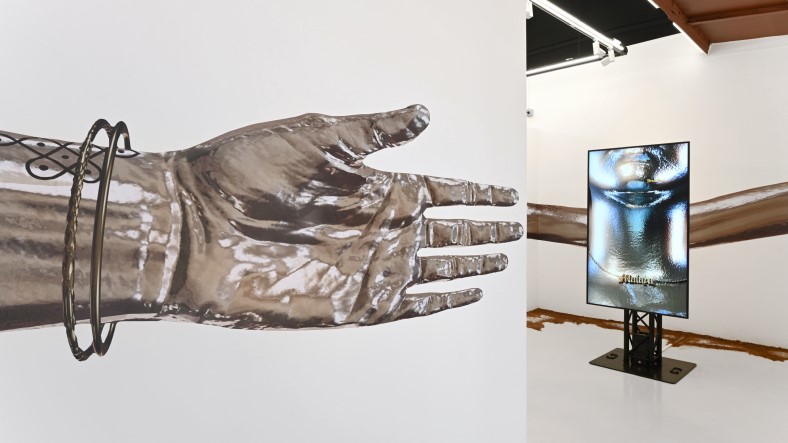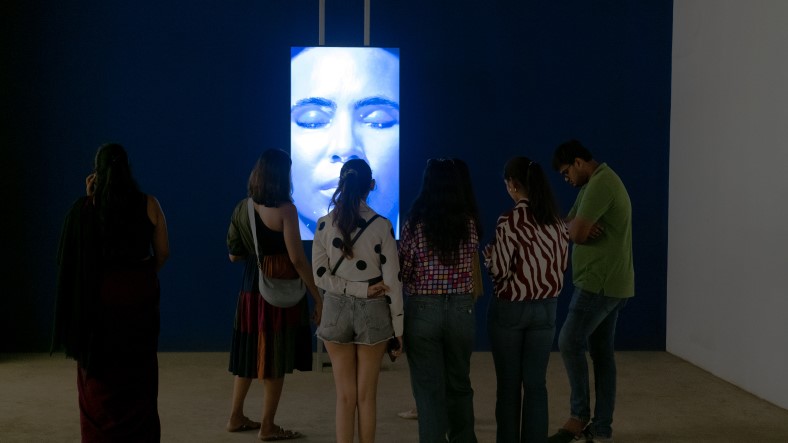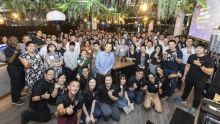
Wars, plantations and how they affected history
From August to November 2023, SMU Libraries hosted artist Priyageetha Dia in its inaugural Artist-in-Residence (AiR) programme. She worked on research concerning the communist insurgency during the Malayan Emergency and the role of rubber plantations in the Cold War that was concurrently developing at about the same time.
“This area of study is not only historically rich but also complex, requiring a deep dive into various aspects of political, social, and economic narratives of that era,” she explains.

Artist-in-Residence at SMU Libraries
The AiR Programme was created in line with the Libraries’ strategic direction to cultivate connections and diverse learning experiences, as well as to advance research. SMU’s location in the arts and heritage district also positions the programme to serve as an incubation hub that supports the city’s art ecology.
By providing time, space and resources to the invited artist, the programme aims not only to support artistic research, but also to contribute to the cultural and intellectual life on campus, especially by inspiring curiosity and fostering critical thinking and creativity through the resident’s interactions with the SMU community.
The inaugural residency cycle, also served as a pilot for the programme and received plenty of support and interest from the SMU community. SMU Libraries now seeks to assess the programme’s meaningful impact both within and beyond SMU, as well as the needs and receptiveness of the SMU community.

The roads that led us here
Priyageetha was selected because her artistic practice aligned with SMU’s strategic priorities, especially that of “Growth in Asia”. Her on-going practice looks into speculative narratives on Southeast Asian plantations as sites for recovering stories of resistance – a part of history that has inspired the growth trajectory of many countries in the region.
In fact, SMU Libraries was especially keen on her research project as they could see how the project could benefit greatly from having access to the Libraries’ resources – one of the factors that motivated Priyageetha to embark on this programme as well.
“Having unparalleled access to scholarly materials and databases, was not just a matter of convenience but a fundamental requirement for the depth and quality of academic inquiry I aimed to pursue.”
She uncovered new facets of her research interest during the AiR programme and deepened her understanding of the Cold War era in Asia.

When art and society meet
Besides deepening her knowledge, the AiR programme also sought to enable the community to learn from Priyageetha’s practice. Different programmes were held for public engagement as well as with SMU-X’s Virtual Reality for Business, an experiential programme which saw her working alongside Professor Kyong Jin Shim to provide guidance to some SMU students.
Priyageetha thus learned the basics of VR programme and integrating the historical narratives from her research into the digital realm – a change from her usual video/visual art/performance works.
“This not only added another digital dimension to my existing practice but also deepened my research into Cold War dynamics through the historical and the geopolitical,” she reflects.
“This also offered a chance to directly impact student learning and understand industry practices outside of the art world.”
The invaluable opportunity of this programme lies perhaps in its potential as a platform for artists, SMU students and the public at large to exchange knowledge and perspectives, which can introduce new ideas or broaden understanding of a subject matter.
From her perspective as an artist, Priyageetha has a newfound appreciation on the intersection of art and academia.
“Working alongside academics can provide new research methodologies and theoretical frameworks as well as creative approaches to academic subjects,” she says.
“For future artists participating in the programme, it's crucial to remain open to the vast learning opportunities it presents.”


